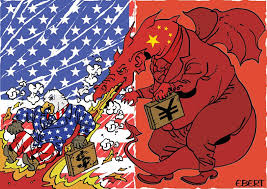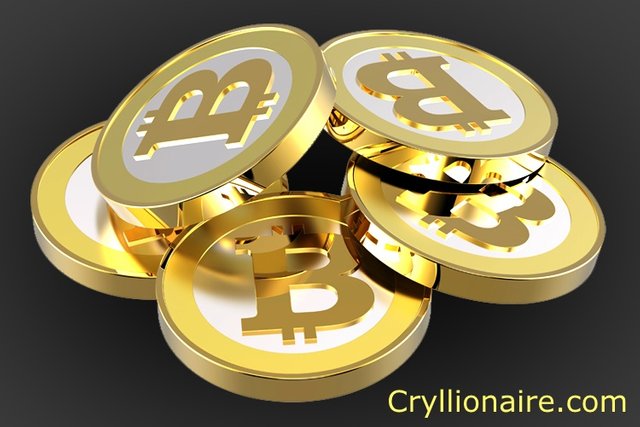Crypto & Chinese New Year
Crypto Market Update:

If something as young as eight years old can have a tradition, then this is it: Bitcoin dips before Chinese New Year, and takes until Easter to climb back. Bitcoin (BTC) reached record highs in 2017, coaxing other coins along with it, before diving rapidly this month. What’s with that?
Rocketing up from sub-$1000 in January 2017, the first cryptocurrency hit highs of $25 000 towards the end of 2017, causing it to appear in mainstream TV, press & social media.
All of a sudden, it seemed that “everyone” was a “Bitcoin expert” and everyone had an opinion. At least four Multi-Level Marketing companies launched bitcoin investment packages, and crypto was the topic of conversation at many parties.
But then the market crashed, as it does every year since it began, taking many other coins (and many “experts” down with it).
The history & the histrionics:

In 2009, bitcoin was practically worthless, traded as a curio by a handful of cryptography fans. An anonymous user called “SmokeTooMuch” tried to sell 10 000 BTC for $50 in March 2010; nobody bought.
A few months later, in May 2010, Laszlo Hanyecz traded 10 000 BTC for two pizzas, the first BTC transaction to buy goods in the “real world”.
By July 2010, BTC price had increased from less than $0.01 to $0.08; still small denominations, but a 900% gain for early investors (and a great tip for the pizza man!)
Over the next six months, BTC rose from 8 cents to hit parity at US$1, a milestone for the new currency to be taken seriously.
One year later, in July 2011, BTC was US$31, but by the time the Christmas decorations came out in December 2011, it had tumbled back down to just $2. This 95% drop was upsetting for those who came late to the party, but still a 100% gain for those who had been in for more than a year.
The $2 Christmas gifts, if held to April, were $13, a decent 600% gain for those who were holding, but not yet back to its previous year’s high.
Another year passed and in 2013, BTC went up 2000% from $13 to $266, back down to $50 and then up to $100. Day-traders would have felt sea-sick, but longer-term holders were OK.
In November 2013, BTC topped at US$1242, before crashing 50% in late December to $650. The price stayed low through April 2014, going down as low as $300 before a strong rally up to $500 in November 2014.
More lulls in 2015 at $200–300, and a spike later in the year as BTC climbed to $500 in December 2015, up to $700 in early January 2016.
Throughout 2016, prices wavered between $400–600, before again climbing over $750 in late November.
Prices peaked in January 2017 over US$1150; but within days the price dropped 30% in a single week.
Resting at $750 in January 2017, the price recovered to beat $1250 by April.
Mainstream adoption was not yet here, but a few people were talking.
May 2017 saw BTC rise from $1000 to $2000. By June it was $3000. By August BTC was $4000, and September $5000. October saw highs of $6000. In November the peak BTC price of $7000 climbed to $8000 within days.
The story broke through to the media. People were getting rich in an underground economy. The frenzy and FOMO saw the price rise from November’s $8000 to $17 900 by 15th December.
People who had held for years were partying. People who jumped in one month earlier were celebrating (perhaps too early).
From its high on Dec 15th 2017 of US$17 900, BTC shed 30% in a week, down to $14 000. Was this a sell-out or a buying opportunity?
Oops: from its low, BTC fell lower still, shedding another 50% to under $7000.
It seemed to many that the party was over and Bitcoin was dead. Longer-term investors knew that many Asians were selling out and pocketing their previous 6–12 months’ gains in anticipation of an even bigger party…
Chinese New Year is a celebration like Christmas and New Year’s Eve combined. As it follows the lunar cycles, the date varies, but all investors in a truly global market should know them.
For many western investors who are used to their local stockmarket, the Asian influence could be a shock.

In the USA, there are Friday afternoon “beer-o-clock” drops, “Black” Monday dips and the occasional awful October. Long-term stockmarket investors may also know the 7–10 year cycle of the “economic clock”.
In Australia, there is end of financial year “dividend stripping” in June, and the end of the bank year in September. Longer-term investors know that these patterns and drops represent good buying opportunities.
When a market of almost 3 billion people in China, Singapore, Korea, Indonesia and India can sell down an investment by 50% within a month, that could seem scary to some.
Knowing that a) their family is more important to them than the money, and b) the Asian investors possibly bought in sub-$1000 and sold out over $7000, then you will start to understand.
Bitcoin and cryptocurrency is a new concept. It does not carry the 200-year history charts of a US, Australian or European stock market, nor the 400-year history of the property market.
No one can definitively predict a crypto boom, crypto bust or crypto bubble with accuracy. We only have, at best, around a decade of past data, and nobody can accurately predict the future when exponential technology is involved.
However, there are some patterns which can be seen to emerge.
Chinese New Year is just one of the patterns. Hold strong if you can, buy in the dips if possible, and do not overstretch yourself.
Only invest what you can afford to see rise up and down, or just don’t watch the waves. For some people, chasing peaks and troughs is a daily or hourly business, but it requires a lot of time, and a strong stomach.
For other people, focusing on the passing waves is inconsequential; instead, we can sit back on the cruise ship, focus on the distant horizon, and trust that our destination will be warm and sunny.
See you on the beaches
JB
Broader market:
Stocks
The popular tech stocks referred to as “FANG’ in the USA (Facebook, Amazon, Netflix & Google) shed a collective $90 Billion on the first Monday in February. This sounds like a lot of money, but compared to their market cap, is just a 5% dip.
Looking at long-term gains, the 5% dip is a blip: if you had been in there for a year, you would still be up between 20–30%. If you had been investing for the last 5–7 years, you would still be sitting on gains of 175%.
The Australian Stock Exchange (ASX) reportedly shed $56 Billion, but again, this is a blip of just 3.2%. Over the past year, the Aussie exchange gave returns of around 18% to investors.
Don’t panic at the daily news. Watch the annual roundups.
Stay tuned: Boston Coin and similar crypto ETF’s are coming soon to reduce market volatility.
